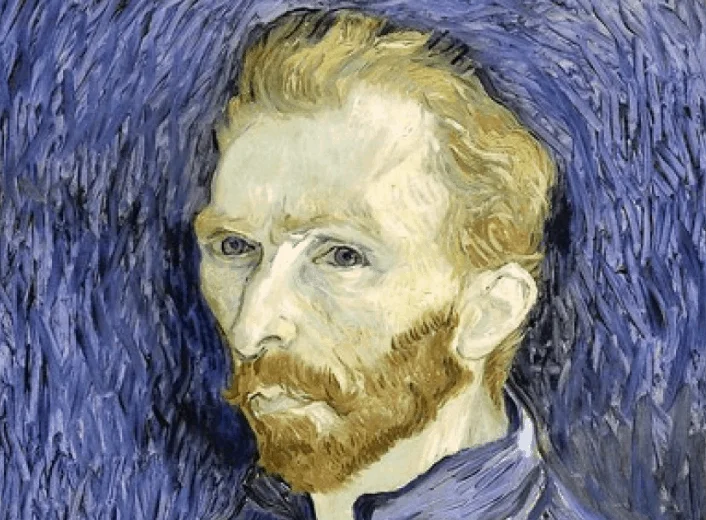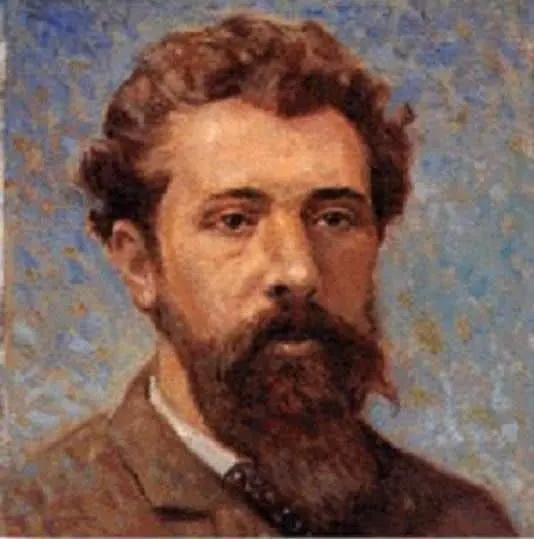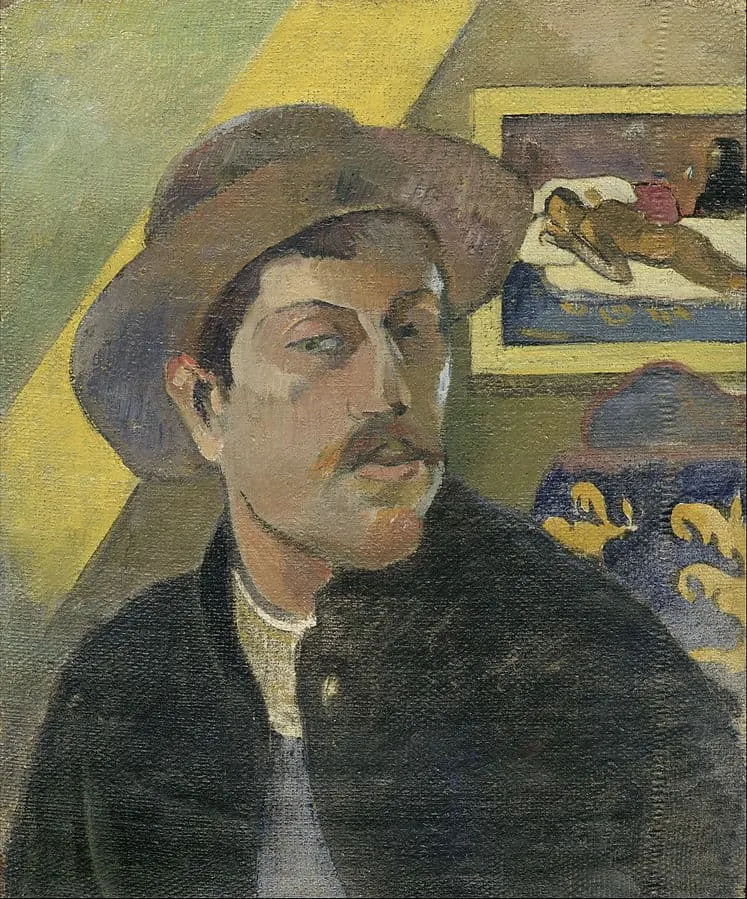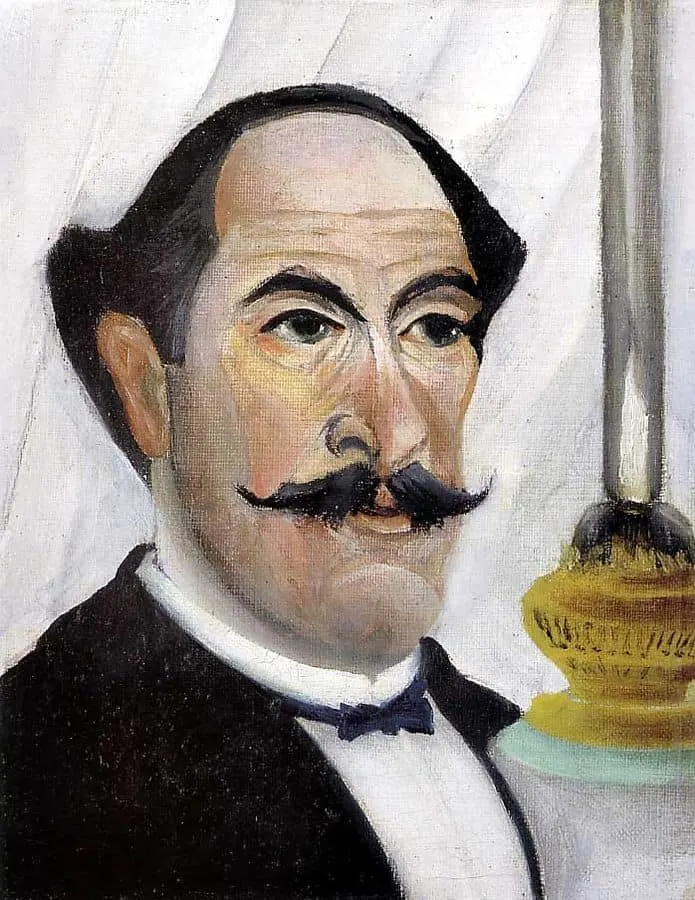The Impressionist artists rejected the ideas of the Realism Artists in the 1870s and 1880s. They incorporated a more dramatic style, similar to the Romantic artists of the beginning of the 19th century, by using colorful brush strokes.
Starting around 1886 and lasting until around 1905, a new art movement emerged in reaction to the simplistic ideas of Impressionism. It combatted its trivial subject matter, while at the same time continuing to use vivid and vibrant colors.
The term Post-Impressionism was first used by British art critic and painter Roger Fry in the year 1906 and was coined by him in 1910. This defined the style as an art movement in reaction to the French art of Monet and Manet, defined by twisting forms to exaggerate the expressive effect.
So who were the most famous Post-Impressionist Artists? In this post, you’ll find out!
Related: Check out some of the most famous Post-Impressionist pantings.
1. Vincent van Gogh
Vincent van Gogh (1853-1890) is arguably one of the most famous artists in history, and it’s not because of his tragic suicide in 1890, but also because of his extremely prolific career and the extensive oeuvre he left behind. Unable to become successful in his lifetime, he created some of the world’s most famous paintings, including “The Starry Night,” “The Potato Eaters,” and “Café Terrace at Night.”
He created about 2,100 paintings and drawings in the final decade of his life. His style, which includes bold colors and dramatic effects, defines the art movement. This is the main reason he’s considered to be one of the most famous Post-Impressionist artists!

2. Paul Cézanne
Paul Cézanne (1839-1906) is considered to be the father of Post-Impressionism. His work defined a completely new style that lay the foundation of art in the early 20th century and beyond. His paintings have inspired the likes of Pablo Picasso and Henri Matisse and numerous artists to follow, making him one of the most inspirational Post-Impressionist artists of all.
Similar to the brushstrokes of van Gogh, his work is easily recognizable as it mainly consists of relatively small brushstrokes that grow into complex subjects. This has resulted in numerous famous works of art, one of which is called “The Card Players” and which has a valuation of about $300 million USD today!

3. Georges Seurat

Georges Seurat (1859-1891) is another French artist who is the creator of pointillism, a style in which fields of the painting’s subjects are created by colors that consist of individual dots. Despite his extreme talent, he didn’t live long enough to fully fulfill his promise and died at the young age of 31.
Regardless, his most famous work of art is called “A Sunday Afternoon on the Island of La Grande Jatte” and is considered to be the epitome work of Post-Impressionism. Better yet, it’s considered to be one of the defining paintings of the end of the 19th century and changed art for multiple decades to follow!

4. Paul Gauguin
Paul Gauguin (1848-1903) is another artist which wasn’t appreciated during his lifetime, similar to Vincent van Gogh with whom he spent 9 weeks together at the Yellow House in Arles in 1888. This period eventually culminated in Vincent cutting off part of his left ear.
Gauguin incorporated a Synthetist style into his works which were defined by his experimental use of color. He spent a decade in French Polynesia in the latter part of his life which is why a lot of his work from this period involved exotic subject matter, including landscapes and people from this part of the world. His work eventually became a major inspiration for modern artists.

5. Paul Signac
Paul Signac (1863-1935) is famously known for working closely together with Georges Seurat to develop the pointillist style. He was originally trained to become an architect and didn’t decide to become a painter until he visited an exhibition of Claude Monet paintings at the age of 18. This was a great decision as he’s now considered to be one of the most famous Post-Impressionist artists in history.
Many of his paintings have the subject of the French coast which Signac loved to paint. He’s also known for his work together with Vincent van Gogh, including river landscapes and cafés in Paris. He was one of the founding members of the “Société des Artistes Indépendants” and was president of the society from 1908 until his death.

6. Henri Rousseau
Henri Rousseau (1844-1910) is another late bloomer because he didn’t start to take his painting seriously until he was in his early 40s. Before that, he had a regular job as a toll and tax collector which earned him the nickname “Le Douanier.” When he reached the age of 49 he finally decided to say his day job goodbye and become a professional painter.
This also means that he was for the most part self-taught and painted from his heart rather than any formal education or influence from other painters. Because of this, he was often ridiculed by contemporary critics, but this gradually changed and he’s now considered to be one of the ultimate self-taught geniuses in art history. Many of his most famous paintings depict jungle scenes.

